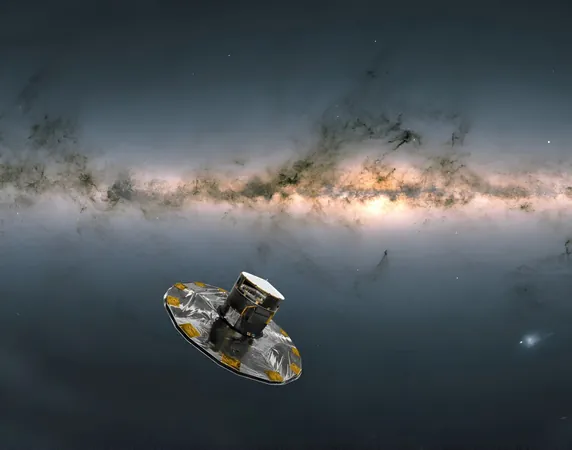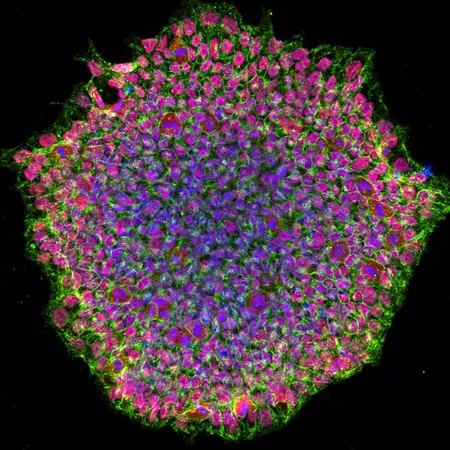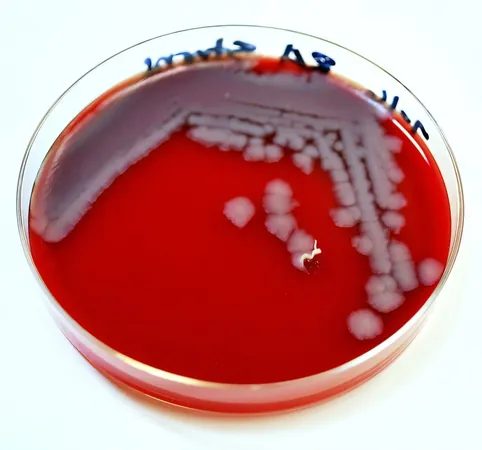
Farewell to Gaia: The Heroic Spacecraft That Mapped Our Milky Way Galaxy
2025-03-30
Author: Li
Farewell to Gaia: The Heroic Spacecraft That Mapped Our Milky Way Galaxy
In a historic milestone, the European Space Agency's (ESA) Gaia spacecraft has concluded its remarkable mission after more than a decade of stellar exploration. On March 27, mission controllers at ESA's European Space Operations Center (ESOC) officially powered down Gaia, sending it into a designated solar orbit that will keep it safely away from Earth for the next century.
Despite its systems now falling silent, the scientific significance of Gaia's work is only beginning to emerge.
A Decade of Transformative Discoveries
Launched in 2013, Gaia undertook the ambitious goal of creating a detailed three-dimensional map of our Milky Way galaxy. Over its operational lifetime, it meticulously recorded the positions, motions, distances, and characteristics of nearly two billion stars, generating a vast amount of data that is already revolutionizing our understanding of galactic formation and evolution.
Prominent findings include insights into the nature of black holes, the discovery of new star clusters, and a clearer picture of distant galaxies. Johannes Sahlmann, Gaia Project Scientist, likened the mission's dataset to a "treasure trove" that enriches nearly every corner of astronomical research.
Even now, as Gaia enters retirement, the wealth of information it has provided will keep astronomers busy for years to come, with a major data release planned for 2026 and a final legacy catalogue anticipated post-2030.
The Challenges of Decommissioning
The project team faced significant challenges when it came to decommissioning Gaia. Designed to withstand the unforgiving conditions of space—including radiation storms and micrometeoroid strikes—Gaia's array of redundant systems ensured that it could revive itself following many disruptions. This very resilience complicated the process of shutting it down.
"Closing down a spacecraft sounds simple," explained Spacecraft Operator Tiago Nogueira, "but in reality, they resist being turned off." To mitigate the risk of any unexpected reactivation, mission controllers developed a deliberate and intricate shutdown sequence, meticulously disabling each subsystem and corrupting its software.
Ensuring a Safe Distance
As part of the shutdown, Gaia’s thrusters fired one final time, propelling it from its observing position near the second Lagrange point (L2) to a post-mission orbit around the Sun, effectively placing it over 10 million kilometers away from Earth. This careful maneuver guarantees Gaia’s safety and protection for at least a century.
Julia Fortuno, a Spacecraft Operations Engineer, expressed her mixed emotions about this farewell: “It’s a blend of excitement for completing this critical phase and sadness to part ways with a spacecraft I’ve dedicated over five years to.”
Legacy and Impact: Beyond Data Collection
Even though Gaia is no longer operational, its legacy will endure for generations. Future ESA missions, including the upcoming Euclid mission, will utilize Gaia’s star maps for precise orientation. Additionally, the PLATO mission, created to hunt for exoplanets, will leverage Gaia’s rich dataset to select stars most likely to support planetary systems.
In its final weeks, Gaia was also engaged in technology tests that provided invaluable insights regarding its micropropulsion system, which could be crucial for ESA's future LISA observatory aimed at detecting gravitational waves.
Adding a deeply human touch to the spacecraft's final days, around 1,500 names of the personnel involved in the Gaia project have been inscribed into its memory, creating a lasting tribute as it journeys silently through space.
A Bittersweet Farewell
ESA's dedication to responsible space debris management reflects in Gaia's graceful decommissioning. However, for the scientists and engineers who dedicated years to the project, saying goodbye was emotional. "We will always remember Gaia, and in a way, it will always remember us," said Gaia Mission Manager Uwe Lammers.
While Gaia may no longer be gathering data, it has undeniably charted a transformative course for galactic exploration. The path it blazed will continue to inspire future astronomers and deepen our understanding of the universe.
Stay tuned for more news about groundbreaking missions and discoveries in our solar system and beyond. The stars are just the beginning!




 Brasil (PT)
Brasil (PT)
 Canada (EN)
Canada (EN)
 Chile (ES)
Chile (ES)
 Česko (CS)
Česko (CS)
 대한민국 (KO)
대한민국 (KO)
 España (ES)
España (ES)
 France (FR)
France (FR)
 Hong Kong (EN)
Hong Kong (EN)
 Italia (IT)
Italia (IT)
 日本 (JA)
日本 (JA)
 Magyarország (HU)
Magyarország (HU)
 Norge (NO)
Norge (NO)
 Polska (PL)
Polska (PL)
 Schweiz (DE)
Schweiz (DE)
 Singapore (EN)
Singapore (EN)
 Sverige (SV)
Sverige (SV)
 Suomi (FI)
Suomi (FI)
 Türkiye (TR)
Türkiye (TR)
 الإمارات العربية المتحدة (AR)
الإمارات العربية المتحدة (AR)